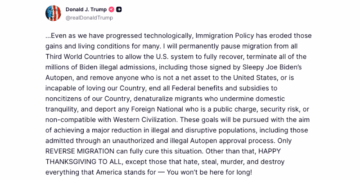The U.S. Supreme Court on Monday, July 14th, granted the Trump administration permission to proceed with significant staff reductions at the Department of Education, pausing a lower court order that had temporarily reinstated over 1,400 employees.
In a 6–3 decision, the justices approved the administration’s emergency request, effectively greenlighting plans to cut the department’s workforce by approximately 50% while legal challenges continue. The majority did not issue a signed opinion.
Affected employees received layoff notices the same day, which cited agency restructuring as the reason for termination. The notices emphasized that the decision was not based on job performance or conduct.
President Donald Trump welcomed the ruling, calling it “a major victory” for families and framing it as a step toward shifting control of education back to the states.
Education Secretary Linda McMahon echoed that sentiment, describing the staff cuts as necessary to improve operational efficiency and focus resources on students and teachers. She emphasized that core responsibilities, including civil rights enforcement and the distribution of federal aid, would continue.
Justice Sonia Sotomayor warned that the ruling posed “a grave” threat to the Constitution’s separation of powers and argued it could lead to delays or denials in educational opportunities for vulnerable students.
Lower court judges had previously blocked the layoffs, questioning the administration’s motives and warning of severe impacts on the department’s ability to meet its statutory obligations. One judge, Myong Joon, said the plan appeared to be designed to dismantle the department without congressional approval.
The Department of Education, established in 1979, oversees federal education policy and ensures equal access to education for all. Opponents of the cuts argue that the layoffs undermine these goals, while supporters say they eliminate unnecessary bureaucracy.
Trump has pledged to continue pushing for legislation to shut down the department entirely. The legal case remains unresolved, with further court proceedings expected in the coming months.










